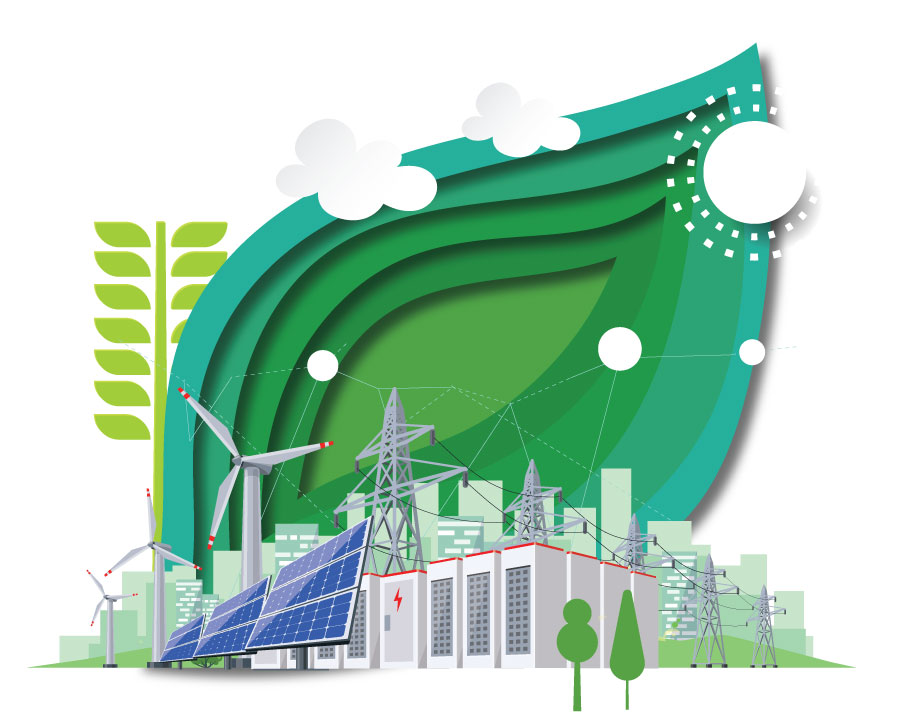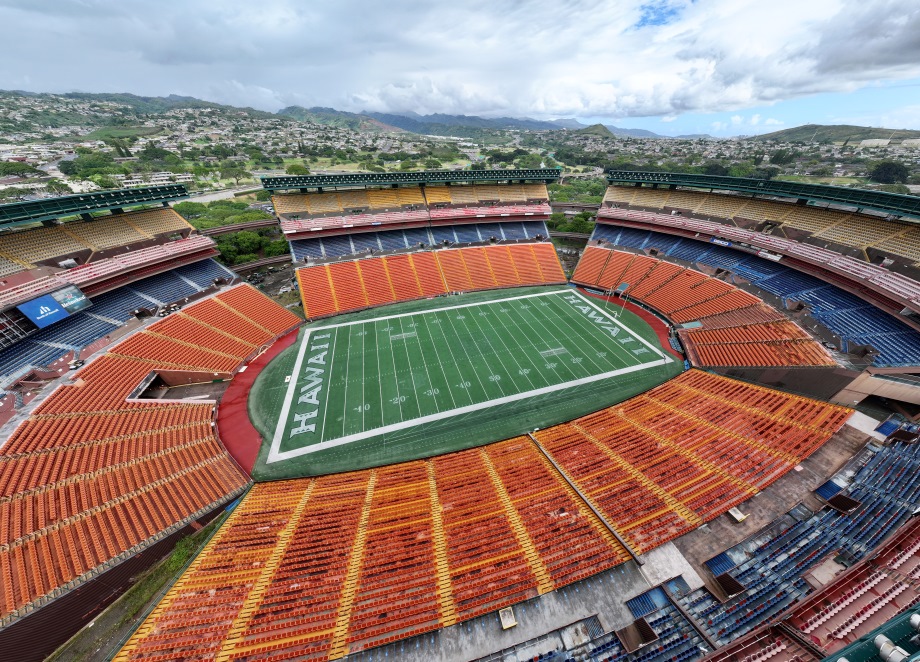Energy Blog: Today’s Energy Infrastructure Decisions Will Last a Lifetime
Energy Blog: Today’s Energy Infrastructure Decisions Will Last a Lifetime


Revamping our energy infrastructure is an enormous opportunity for engineers, who will be tasked with planning, designing, building, and operating this new system.
My father turns 90 this year, and his life covers an incredible span. As he likes to tell it, he remembers visits from his great-grandfather, who worked on the American frontier in the late 19th century. As I like to point out, if his granddaughter—my daughter—lives as long as he has, she will see the end of 21st century and maybe the start of the 22nd. It somewhat boggles the mind that the lives of two people—who know each other and are linked by family ties—could together span from 1931 to 2101.
Construction on Hoover Dam also started in 1931, and that hydroelectric project stands as an emblem of an era of American infrastructure. For a time, the nation built massive dams and long bridges and extensive road and rail networks. And since then, Americans have enjoyed the power and connectivity that those projects have provided.
But the energy infrastructure built when my father was a child is insufficient for the needs of my daughter and her cohort as they grow to adulthood. The power grid as currently construed is incompatible to the demands of the 21st century; Continuing with the present-day system, which is still dominated by power plants fueled with natural gas and coal, is no longer an option. The expectation of carbon-free electricity and electric vehicles and a general lessening of environmental stresses can be met only through a substantial overhaul.
It is a challenge, but also an enormous opportunity for engineers, who will be tasked with planning, designing, building, and operating this new system.
This month, the editors of Mechanical Engineering magazine will host a series of conversations with experts on various aspects of this challenge. We call the series, “The Green Transition: Building a New Energy System,” and our intent is to approach the topic from different but complementary angles.
The first discussion, hosted by Chitra Sethi, the executive editor for media at ASME, is “Implementing a Zero-Carbon Policy.” Sethi will be speaking to Noël M. Bakhtian of Lawrence Berkeley National Laboratory, Ryan Legg of GE Renewable Energy, and Paul Fakes of ASME’s Government Relations office about policy changes that have already been announced by the Biden administration, the status of clean energy legislation being debated in Congress, and how it impacts engineering companies. This conversation is scheduled for Monday, June 7, and I can’t wait to watch it.
The rest of the series will occur over the next three Mondays in June. On June 14, our Senior Editor John Kosowatz will be talking to John Glassmire of Hitachi ABB Power Grids and Tim Lieuwen of Georgia Tech to answer the question, “Where Would Carbon-Free Power Come From?” And on June 21, ASME’s Carlos Gonzalez will lead a panel called, “Electrify Everything: Cutting Carbon from the Demand Side,” with Scott Skylar of the Stella Group, Brian Lynch of LG Electronics, and Pravin Nakod from Ansys.
To conclude the series, I will speak with Gary Brinkworth of the Tennessee Valley Authority and Princeton University’s Jesse Jenkins about the power lines, energy storage, and everything else needed to support the turn to green energy sources. Our discussion is titled, “The Green Grid: Building the Infrastructure to Transition from Carbon,” and will be aired on June 28. I can tell you that Brinkworth and Jenkins know their stuff and it will be impossible to watch this without coming out smarter.
When I think of the infrastructure decisions being made today, I keep coming back to the lives of my father and my daughter. So much of American infrastructure—not just monumental dams but also the highway system and electrical grid—was constructed or at least planned during his first decades. The infrastructure being planned and built in the next couple decades will define the rest of this century. I hope you join me and the rest of the ASME team in these important discussions.
Jeffrey Winters is editor in chief of Mechanical Engineering magazine.
Register Today for "The Green Transition"
Construction on Hoover Dam also started in 1931, and that hydroelectric project stands as an emblem of an era of American infrastructure. For a time, the nation built massive dams and long bridges and extensive road and rail networks. And since then, Americans have enjoyed the power and connectivity that those projects have provided.
But the energy infrastructure built when my father was a child is insufficient for the needs of my daughter and her cohort as they grow to adulthood. The power grid as currently construed is incompatible to the demands of the 21st century; Continuing with the present-day system, which is still dominated by power plants fueled with natural gas and coal, is no longer an option. The expectation of carbon-free electricity and electric vehicles and a general lessening of environmental stresses can be met only through a substantial overhaul.
It is a challenge, but also an enormous opportunity for engineers, who will be tasked with planning, designing, building, and operating this new system.
This month, the editors of Mechanical Engineering magazine will host a series of conversations with experts on various aspects of this challenge. We call the series, “The Green Transition: Building a New Energy System,” and our intent is to approach the topic from different but complementary angles.
The first discussion, hosted by Chitra Sethi, the executive editor for media at ASME, is “Implementing a Zero-Carbon Policy.” Sethi will be speaking to Noël M. Bakhtian of Lawrence Berkeley National Laboratory, Ryan Legg of GE Renewable Energy, and Paul Fakes of ASME’s Government Relations office about policy changes that have already been announced by the Biden administration, the status of clean energy legislation being debated in Congress, and how it impacts engineering companies. This conversation is scheduled for Monday, June 7, and I can’t wait to watch it.
The rest of the series will occur over the next three Mondays in June. On June 14, our Senior Editor John Kosowatz will be talking to John Glassmire of Hitachi ABB Power Grids and Tim Lieuwen of Georgia Tech to answer the question, “Where Would Carbon-Free Power Come From?” And on June 21, ASME’s Carlos Gonzalez will lead a panel called, “Electrify Everything: Cutting Carbon from the Demand Side,” with Scott Skylar of the Stella Group, Brian Lynch of LG Electronics, and Pravin Nakod from Ansys.
To conclude the series, I will speak with Gary Brinkworth of the Tennessee Valley Authority and Princeton University’s Jesse Jenkins about the power lines, energy storage, and everything else needed to support the turn to green energy sources. Our discussion is titled, “The Green Grid: Building the Infrastructure to Transition from Carbon,” and will be aired on June 28. I can tell you that Brinkworth and Jenkins know their stuff and it will be impossible to watch this without coming out smarter.
When I think of the infrastructure decisions being made today, I keep coming back to the lives of my father and my daughter. So much of American infrastructure—not just monumental dams but also the highway system and electrical grid—was constructed or at least planned during his first decades. The infrastructure being planned and built in the next couple decades will define the rest of this century. I hope you join me and the rest of the ASME team in these important discussions.
Jeffrey Winters is editor in chief of Mechanical Engineering magazine.
Register Today for "The Green Transition"



